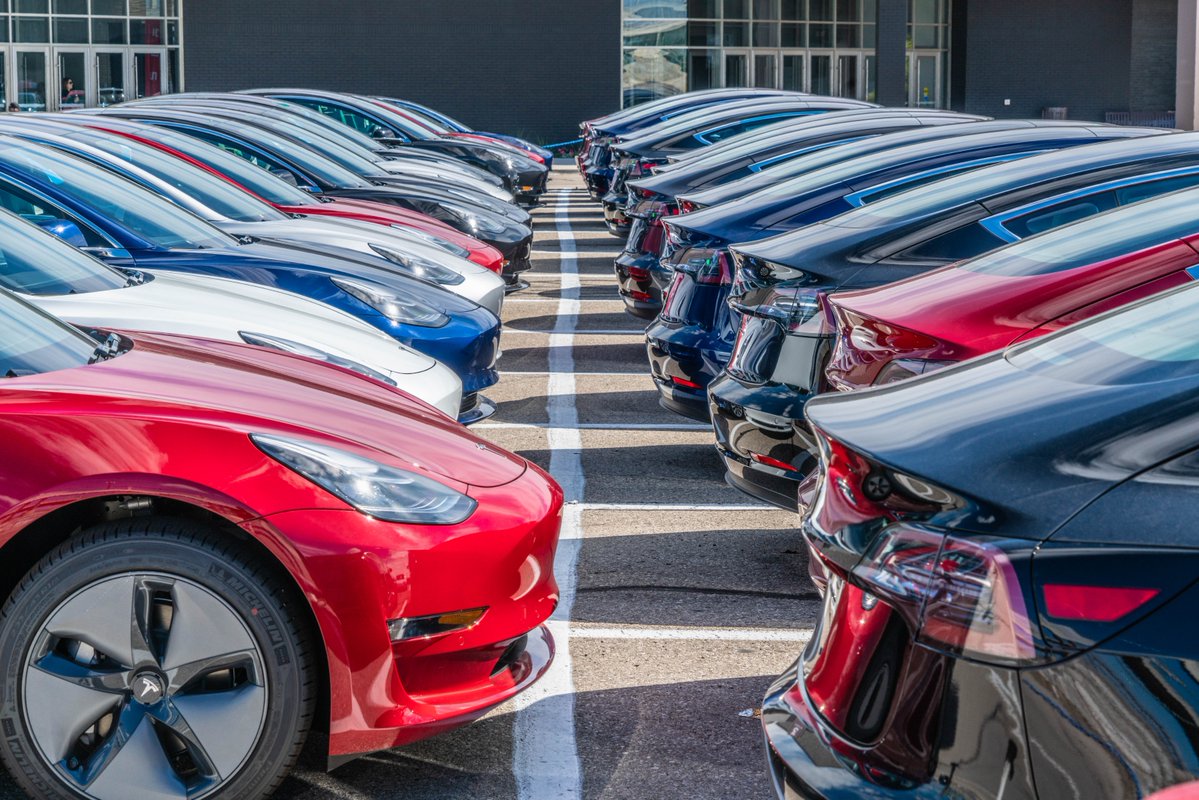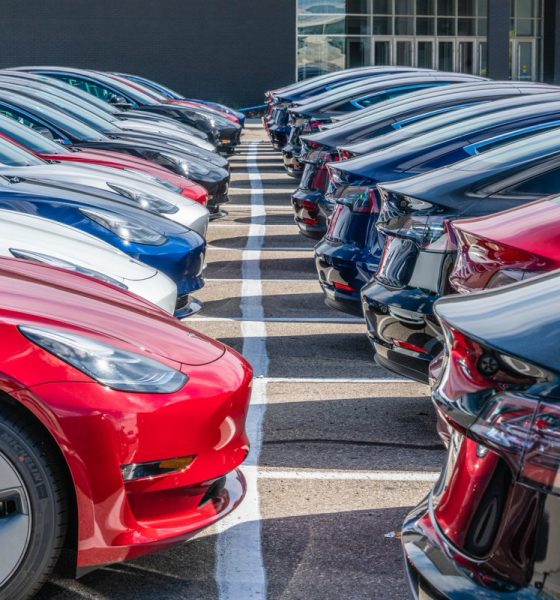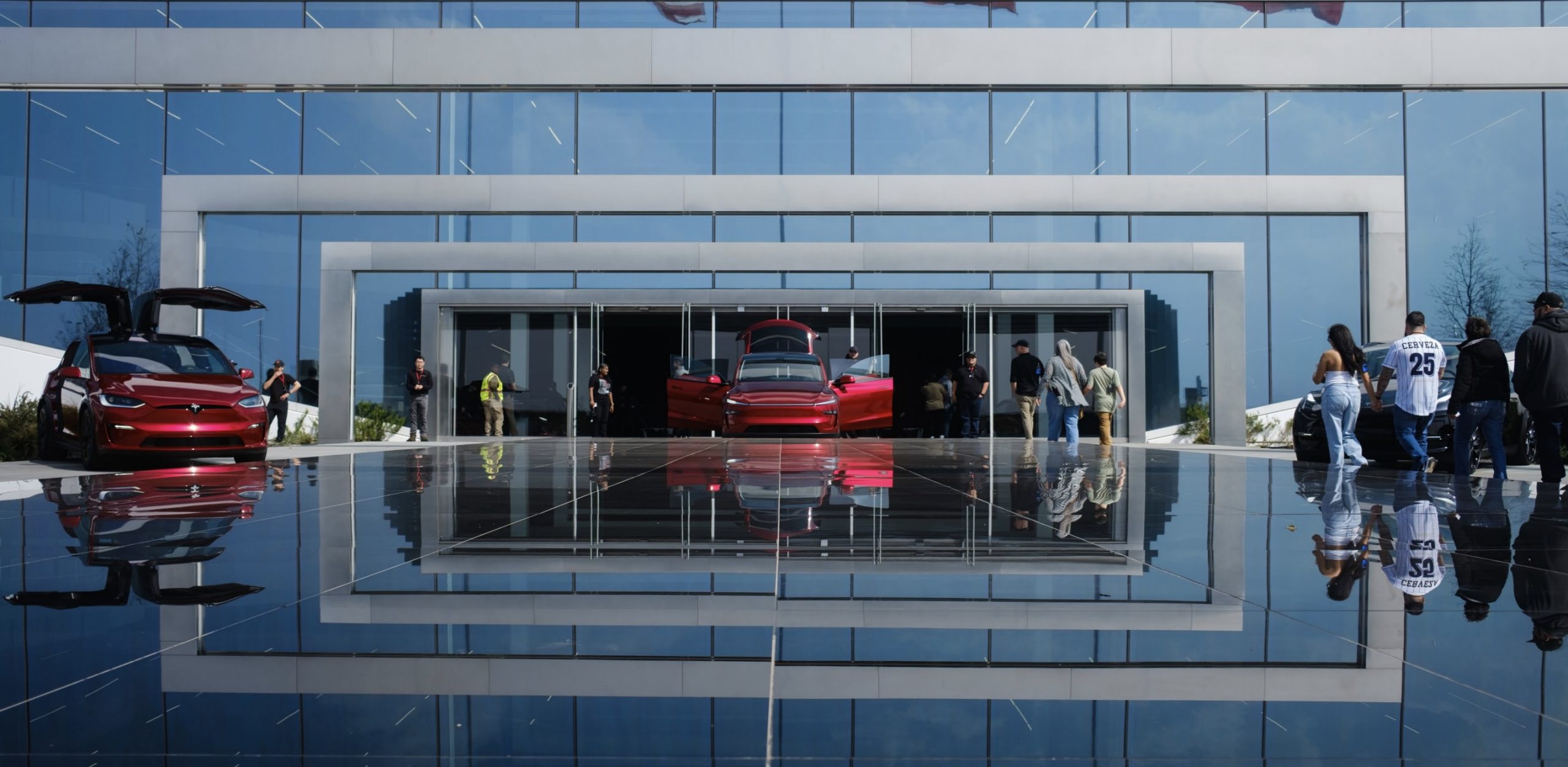

Investor's Corner
Concerns about Tesla’s (TSLA) alleged ‘demand problem’ are likely overblown
The past few months have not been kind to Tesla stock (NASDAQ:TSLA). Following the company’s lower-than-expected production and delivery figures from the first quarter, the negative narrative surrounding Tesla has gone on overdrive. At the forefront of this is a thesis that the electric car maker’s critics have been pushing: Tesla has a demand problem.
This particular point has spread like wildfire, particularly over the past few weeks. Analysts that recently downgraded TSLA stock would reference weak demand for the Model 3, and bears would echo the same assumption during segments in mainstream media. While this narrative is compelling in the way that it appears to be a foreshadowing of Tesla’s eventual demise, the demand problem thesis is at best inaccurate and at worst flat-out wrong, simply because one can’t base a thesis in one data point.
TSLA investor @Incentives101, an economist with a background in macro research, notes that there is a considerable misconception surrounding Tesla’s Q1 results and how it relates to the demand for the company’s electric cars. In a conversation with Teslarati, the investor explained that while it is easy to make assumptions based on Tesla’s Q1 2019 figures, there is simply not enough data to accurately and responsibly forecast Model 3 (and in extension, Model S and X) demand. Tesla’s Q1 2019 data is nevertheless useful, as it reveals a series of factors that could shed light on what is happening to the electric car maker.

Shocks, Backlogs, and Demand
The economist notes that demand shocks could be transitory or permanent. Taxes, for example, normally have a permanent effect and natural disasters have a transitory one. But these shocks have different effects over time depending on whether a shock is sudden or expected. Understanding how demand normally reacts to these shocks is very important, as it provides clues at what could be expected to make informed assumptions about Q1. When a shock such as a federal tax credit reduction comes, for example, its effect happens in three stages — given that consumers knew it was coming. Before the shock hits, demand generally increases (pulling demand), followed by a period where demand decreases by more than what could be considered a new equilibrium. Following these is another period where demand increases to reach a new equilibrium. Q1 most likely was the worst part of the second stage.
The backlog of Model 3 reservations was primarily used as a point against Tesla by critics, with an assumption suggesting that there will be no demand for the vehicle after the company clears out its initial batch of reservations. The economist argued that while Tesla’s backlog is widely believed to be a factor impacting demand, such a factor would likely not be relevant in the bigger picture. “Given the characteristics of auto demand (it recycles constantly, consumers preferences are well understood, and trends are clear) a ‘backlog’ has the same effect as a natural disaster if you really want to compare it to something. If the backlog happens at the same time as a tax shock or other shocks, it just exacerbates the move. The duration of the shock could be discussed, but in the end, the effect of the backlog is just irrelevant,” the investor said.
Tesla faced a number of shocks in the US auto market in recent months, and these could be translated into inaccurate assumptions. Among these are negative shocks such as the reduced federal tax credit, the “end” of the Model 3 reservation backlog, seasonality, and supply; as well as positive shocks like price reductions on the company’s vehicle lineup.
“There are some main conclusions that one can infer from the data: 1) There isn’t information available to know what the initial equilibrium was. The exponential shape of the curve gives no reference whatsoever to know this. Comparing Model S/X vs. Model 3, is easy to see that S/X had a stable path which would make it easier to measure the impact of these type of shocks; 2) Over time, the shock will be (almost) totally explained by the reduction in supply; 3) Shocks were expected, and price adjustments should more than cancel any negative permanent shock that taxes would have; and 4) Tesla had really bad luck with all these things happening at the same time,” the economist remarked.

Consumer Preferences
Based on these data, one can infer that the primary constraint that Tesla is facing is not demand, but supply. Demand for the company’s vehicles is not exclusive to the United States auto market. It is global, and in this sense, there is simply no indication that global supply for Tesla’s electric cars is already meeting global demand. The investor noted that the effect of the “backlog” argument in global markets would likely be marginal and transitory, and just as demand is not static, supply and prices have not been either.
Ultimately, the most significant factor that would affect the demand for Tesla’s vehicles is consumer preferences. In recent years, consumer preferences are changing in favor of smart devices, and this cascades into the auto industry. Tesla’s electric cars, which are arguably the most tech-focused consumer vehicles on the road today, are a perfect fit for this changing landscape.
According to the economist, “Consumer preferences and regulation actually affect demand. Prices technically don’t affect demand — just the quantity demanded — and the trend shows that it will have a multiplier effect. It’s always important to ask the correct questions, and the question today is not what are they doing to ‘fix’ a transitory shock? Or where’s demand? The question is, how will you increase supply?”
Alleged ‘Cannibalization’ of the Model S and X by the Model 3
In terms of the alleged cannibalization of Model S and X sales by the Model 3, the investor notes that there is no reason, at least at present, to believe that cannibalization is actually happening. Tesla Model 3 sales increased while Model S and X remained in their path, and as sales of the flagship sedan and SUV decreased, Model 3 sales in the US decreased as well.
“Even if you disaggregate data to try to find signs of cannibalization, there’s still no proof. There’s only one market — Norway — that is big enough, that has reliable data and didn’t face any distortions (tax or subsidy), that could give us any insight about cannibalization. Without further information, it would seem that there was significant cannibalization. The only problem is that Tesla distorted the market by eliminating the most popular Model S and X variant (75kWh), which was, on average 70%+ of sales. It is simply impossible to know which effect (the Model 3’s introduction or the 75kWh variant’s elimination) had the biggest impact, or even measure them in any way. And even then, one market may not be enough to prove it,” the investor stated.
Ultimately, the continuing phase-out period of the federal tax credit in the US would likely affect Model S and X sales in the country. But similar to the Model 3, these effects will likely be transitory and not permanent, especially given that prices have changed accordingly, given that the vehicles have better value per dollar. As with the Model 3, the sharp decrease in Model S and X sales in Q1 2019 could be explained by supply changes in its totality. Thus, demand should return to its previous path after a short period of time.
Disclosure: I have no ownership in shares of TSLA and have no plans to initiate any positions within 72 hours.

Investor's Corner
Tesla Q4 delivery numbers are better than they initially look: analyst
The Deepwater Asset Management Managing Partner shared his thoughts in a post on his website.

Longtime Tesla analyst and Deepwater Asset Management Managing Partner Gene Munster has shared his insights on Tesla’s Q4 2025 deliveries. As per the analyst, Tesla’s numbers are actually better than they first appear.
Munster shared his thoughts in a post on his website.
Normalized December Deliveries
Munster noted that Tesla delivered 418k vehicles in the fourth quarter of 2025, slightly below Street expectations of 420k but above the whisper number of 415k. Tesla’s reported 16% year-over-year decline, compared to +7% in September, is largely distorted by the timing of the tax credit expiration, which pulled forward demand.
“Taking a step back, we believe September deliveries pulled forward approximately 55k units that would have otherwise occurred in December or March. For simplicity, we assume the entire pull-forward impacted the December quarter. Under this assumption, September growth would have been down ~5% absent the 55k pull-forward, a Deepwater estimate tied to the credit’s expiration.
“For December deliveries to have declined ~5% year over year would imply total deliveries of roughly 470k. Subtracting the 55k units pulled into September results in an implied December delivery figure of approximately 415k. The reported 418k suggests that, when normalizing for the tax credit timing, quarter-over-quarter growth has been consistently down ~5%. Importantly, this ~5% decline represents an improvement from the ~13% declines seen in both the March and June 2025 quarters.“
Tesla’s United States market share
Munster also estimated that Q4 as a whole might very well show a notable improvement in Tesla’s market share in the United States.
“Over the past couple of years, based on data from Cox Automotive, Tesla has been losing U.S. EV market share, declining to just under 50%. Based on data for October and November, Cox estimates that total U.S. EV sales were down approximately 35%, compared to Tesla’s just reported down 16% for the full quarter. For the first two months of the quarter, Cox reported Tesla market share of roughly a 65% share, up from under 50% in the September quarter.
“While this data excludes December, the quarter as a whole is likely to show a material improvement in Tesla’s U.S. EV market share.“
Elon Musk
Tesla analyst breaks down delivery report: ‘A step in the right direction’
“This will be viewed as better than feared deliveries and a step in the right direction for the Tesla story heading into 2026,” Ives wrote.

Tesla analyst Dan Ives of Wedbush released a new note on Friday morning just after the company released production and delivery figures for Q4 and the full year of 2025, stating that the numbers, while slightly underwhelming, are “better than feared” and as “a step in the right direction.”
Tesla reported production of 434,358 and deliveries of 418,227 for the fourth quarter, while 1,654,667 vehicles were produced and 1,636,129 cars were delivered for the full year.
Tesla releases Q4 and FY 2025 vehicle delivery and production report
Interestingly, the company posted its own consensus figures that were compiled from various firms on its website a few days ago, where expectations were set at 1,640,752 cars for the year. Tesla fell about 4,000 units short of that. One of the areas where Tesla excelled was energy deployments, which totaled 46.7 GWh for the year.
🚨 Wedbush’s Dan Ives has released a new note on Tesla $TSLA:
“Tesla announced its FY4Q25 delivery numbers this morning coming in at 418.2k vehicles slightly below the company’s consensus delivery estimate of 422.9k but much better than the whisper numbers of ~410k as the…
— TESLARATI (@Teslarati) January 2, 2026
In terms of vehicle deliveries, Ives writes that Tesla certainly has some things to work through if it wants to return to growth in that aspect, especially with the loss of the $7,500 tax credit in the U.S. and “continuous headwinds” for the company in Europe.
However, Ives also believes that, given the delivery numbers, which were on par with expectations, Tesla is positioned well for a strong 2026, especially with its AI focus, Robotaxi and Cybercab development, and energy:
“This will be viewed as better than feared deliveries and a step in the right direction for the Tesla story heading into 2026. We look forward to hearing more at the company’s 4Q25 call on January 28th. AI Valuation – The Focus Throughout 2026. We believe Tesla could reach a $2 trillion market cap over the coming year and, in a bull case scenario, $3 trillion by the end of 2026…as full-scale volume production begins with the autonomous and robotics roadmap…The company has started to test the all-important Cybercab in Austin over the past few weeks, which is an incremental step towards launching in 2026 with important volume production of Cybercabs starting in April/May, which remains the golden goose in unlocking TSLA’s AI valuation.”
It’s no secret that for the past several years, Tesla’s vehicle delivery numbers have been the main focus of investors and analysts have looked at them as an indicator of company health to a certain extent. The problem with that narrative in 2025 and 2026 is that Tesla is now focusing more on the deployment of Full Self-Driving, its Optimus project, AI development, and Cybercab.
While vehicle deliveries still hold importance, it is more crucial to note that Tesla’s overall environment as a business relies on much more than just how many cars are purchased. That metric, to a certain extent, is fading in importance in the grand scheme of things, but it will never totally disappear.
Ives and Wedbush maintained their $600 price target and an ‘Outperform’ rating on the stock.
Investor's Corner
Tesla releases Q4 and FY 2025 vehicle delivery and production report
Deliveries stood at 406,585 Model 3/Y and 11,642 other models, for a total of 418,227 vehicles.

Tesla (NASDAQ:TSLA) has reported its Q4 2025 production and deliveries, with 418,227 vehicles delivered and 434,358 produced worldwide. Energy storage deployments hit a quarterly record at 14.2 GWh.
Tesla’s Q4 and FY 2025 results were posted on Friday, January 2, 2026.
Q4 2025 production and deliveries
In Q4 2025, Tesla produced 422,652 Model 3/Y units and 11,706 other models, which are comprised of the Model S, Model X, and the Cybertruck, for a total of 434,358 vehicles. Deliveries stood at 406,585 Model 3/Y and 11,642 other models, for a total of 418,227 vehicles.
Energy deployments reached 14.2 GWh, a new record. Similar to other reports, Tesla posted a company thanked customers, employees, suppliers, shareholders, and supporters for its fourth quarter results.
In comparison, analysts included in Tesla’s company-compiled consensus estimate that Tesla would deliver 422,850 vehicles and deploy 13.4 GWh of battery storage systems in Q4 2025.
Tesla’s Full Year 2025 results
For the full year, Tesla produced a total of 1,654,667 vehicles, comprised of 1,600,767 Model Y/3 and 53,900 other models. Tesla also delivered 1,636,129 vehicles in FY 2025, comprised of 1,585,279 Model Y/3 and 50,850 other models. Energy deployments totaled 46.7 GWh over the year.
In comparison, analysts included in Tesla’s company-compiled consensus expected the company to deliver a total of 1,640,752 vehicles for full year 2025. Analysts also expected Tesla’s energy division to deploy a total of 45.9 GWh during the year.
Tesla will post its financial results for the fourth quarter of 2025 after market close on Wednesday, January 28, 2026. The company’s Q4 and FY 2025 earnings call is expected to be held on the same day at 4:30 p.m. Central Time.








